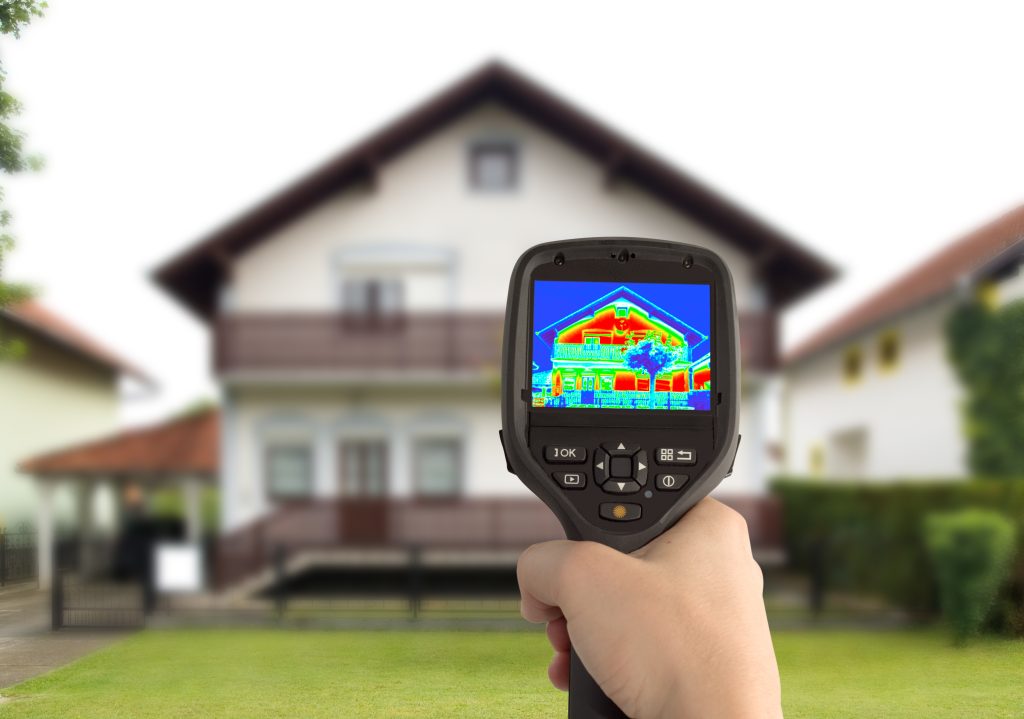While retrofitting a commercial property can make it more energy-efficient, you first have to discover from where the heat is being lost before effective solutions can be applied. Stewart Little, CEO of IRT Surveys, explains the importance of using infrared thermal imaging in pre-retrofit surveys and the value of working with an experienced partner.
Discuss the cost of heating commercial premises with any property manager and they will tell you that energy prices have gone through the roof. In many cases, however, heat going through the roof as well as many other places, is one of the chief causes of rising costs.
There is a wide range of possible solutions that can make commercial properties more energy-efficient and less costly to run, from the installation of a more efficient HVAC system and the adoption of renewable energy sources, to triple glazing and thermal insulation. Given the size of commercial properties, these potentially solutions are seen as a capital investment, which is expected to be returned over time by the reduction in energy usage.
The challenge for commercial property owners and developers alike is to ensure that any solution implemented addresses a building’s energy efficiency issues. A new HVAC system might be less costly to run but the benefits of installing it will be greatly diminished if a significant amount of heat is still being lost.
With there being many unknowns, surrounding the condition of the UK’s existing commercial building stock, facilities managers need to understand the state of their portfolio. Only by getting their building data in check can they eradicate energy wastage and achieve decarbonisation targets.
Effective surveys
As all commercial properties are different, when it comes to energy efficiency, it is best practice to survey each building for energy wastage before making decisions about which solution/s to adopt. Only with the correct data can a retrofit be tailored to meet a building’s specific needs and achieve desired outcomes. This approach also stops unnecessary work from being pointlessly undertaken, thus reducing the overall cost and accelerating the time to completion.
Not only do surveys identify the property’s energy efficiency issues; they also provide data about CO2 emissions and, crucially, enable developers to calculate the cost of implementing solutions. This is achieved through Building Information Modelling (BIM) for building envelope thermal performance analysis and energy efficiency evaluation, which together with thermal imaging, is considered the most effective methodology.
The key role of thermal imaging in pre-retrofit surveys is to identify a building’s energy inefficiencies and from where heat is escaping, this includes issues that cannot be detected by other means.
Infrared technology can survey insulation, building fabric and roof condition, identifying problems with wall cavities, roofing insulation, gaps in window fittings, porous brickwork, waterproofing issues and more. As a result, detailed information is collected that ensures retrofit strategies are custom designed to address the specific needs of the building. The additional benefit is that thermal imaging is non-invasive, which means there is no damage to the fabric of the building as part of the survey, resulting in no additional repair costs.
Choosing the right partner
To ensure a commercial retrofit strategy is effective, there are clear advantages to working with an experienced and established thermal imaging provider. Such partnerships can bring owners and developers the expertise, guidance and advanced technologies these often large-scale projects require.
For example, thermographic drone technology provides a better way to survey roofs. There are, however, strict regulations about how commercial drones can be used, both in terms of health and safety also privacy.
An experienced thermal imaging provider will have suitable drone equipment with ID displayed, trained drone operators, knowledge of regulations and safety procedures, not to mention insurance documents. These are necessary prerequisites to avoid scrutiny and to minimise the possibility of an accident, injury or GDPR breach. Compared to using an inexperienced provider, it will give reassurances that procedures will be stringently adhered to, ensuring a positive reputation for both parties.
Knowledgeable partners also make use of the latest cloud-based software, enabling them to combine BIM, thermal imaging and other supporting data. A commercial portfolio’s energy performance can consequently be analysed to identify the most energy-efficient retrofit strategy. A good example of this is by combining thermal imaging with energy-saving calculator technology, the parties responsible are provided with highly accurate data that enables them to deliver assured, effective and cost-efficient outcomes.
What’s more, it is essential you choose a provider that knows the significance of taking images in the correct conditions. It may seem unimportant to the inexperienced, but adverse conditions can effect so many different things, including quality of images taken, resulting in not providing a true reflection of a building or a roof, in turn resulting in an inappropriate and costly solution being implemented.
The list of things to bear in mind goes on, but in short, choosing an experienced thermal imaging partner, like IRT Surveys, ensures commercial properties are given the right retrofit solutions to eradicate energy wastage, improve energy efficiency, reduce CO2 emissions and keep costs to a minimum. At the same time, they provide the reassurance that technologies, like drones, will be used in accordance with regulations. Indeed, IRT Surveys even offers CPD to help commercial property owners and developers understand thermal imaging technology and how it fits in the pathway to decarbonising buildings.
For more information, visit https://irtsurveys.co.uk/


